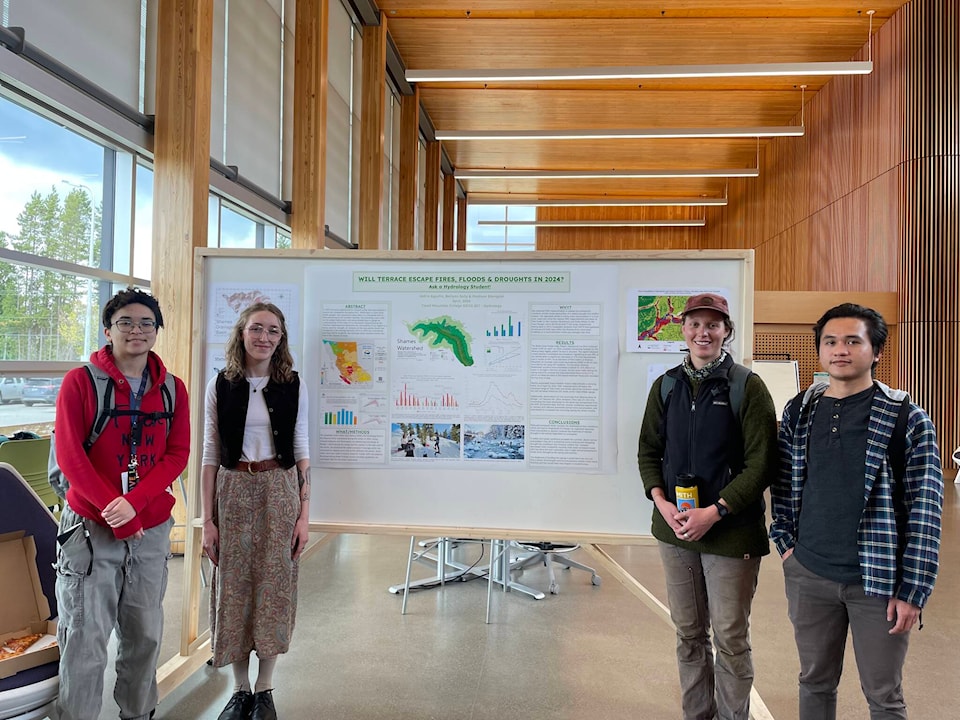Recent forecasts indicate El Nino weather patterns could accelerate the melting of spring snow in Terrace. With water reservoirs already showing signs of strain from decreased rainfall and snowpack levels, experts warn of an impending drought that could exacerbate existing water shortages.
“El Nino will result in an earlier than normal spring snow melt,” said Yannic Brugman, head of flood safety at the Ministry of Water Land and Resource Stewardship.
“In many areas of B.C., we are seeing a potential shift from higher snow packs to fall flooding and that shift can result in more rainfall in the fall.”
El Nino is a climate pattern normally occurring every 3-5 years marked by warmer than average ocean temperatures in the equatorial Pacific.
The Basin Snow Water Index Report released by the River Forecast Center of B.C. on April 1, 2024 unveiled a stark decline in snowpack accumulation in the Skeena-Nass region, registering only 59 per cent of the normal level, which is a significant decrease of 37 per cent from last year’s 96 per cent.
Hydrology students at Coast Mountain College organized a research presentation predicting what the upcoming summer season will look like in the City of Terrace.
The research concluded there is little to no chance of flooding in Terrace this year due to already low snow levels. The low levels of snow are then also a direct cause of early season forest fires, explained Gordon Weary, Hydrology professor at Coast Mountains College.
“As per our research, there is 51 per cent snow compared to [the] last 10 years at Shames, this season. But, it was a relief to see the snow was quite dense.”
Density of the snow is directly proportional to the amount of water it holds.
“The density is at 40 per cent this year which is average,” Weary added.
Weary highlighted flying to Hazelton and witnessing the fully exposed Seven Sisters glacier, something he has never seen in the month of April.
The research concluded the rivers to be at 75-80 per cent water level, however, the spring flow is predicted to be half of normal.
“If we have lower flows, which the research is predicting, then the greatest impact will be on salmon. There will be some impact, but no quantification can be made by saying half the flow means half the fish,” added biology professor Catharine White.
Carol-Ann Bourdon, a student at Coast Mountain College described ‘intense climate anxiety’ in people her age.
“I am in the age group of people who are planning or thinking about starting a family and we are scared to do so because the future feels so uncertain,” she said.
“There are so many other really intense things going on in the world. For example, health care is rumbling beneath us. So, maybe all the efforts and time is going to be focused on something like that over climate change even though, there are a lot inter-connectedness in it all.”
Conversations are also going on in the community as the City of Terrace braces for a potentially dry upcoming season. Last year, the city put a ban on lawn watering to ensure less water waste during a dry spell.
“We want to just pray for the rain,” Weary said.
